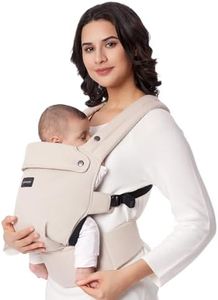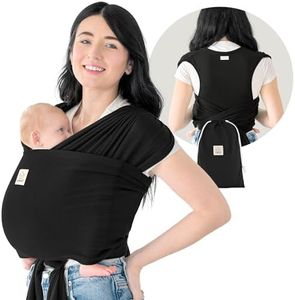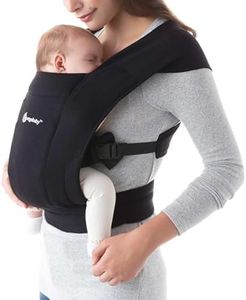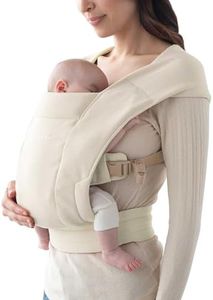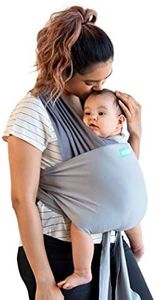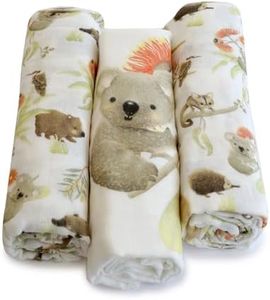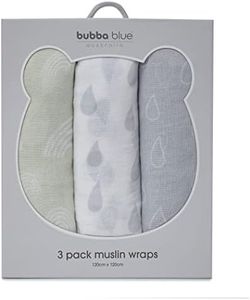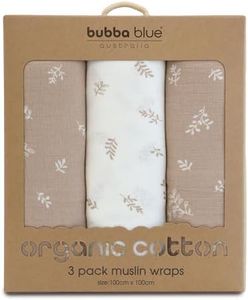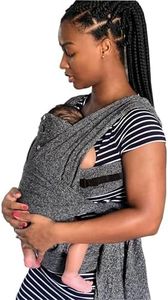We Use CookiesWe use cookies to enhance the security, performance,
functionality and for analytical and promotional activities. By continuing to browse this site you
are agreeing to our privacy policy
10 Best Baby Wraps
From leading brands and best sellers available on the web.By clicking on a link to a third party's website, log data is shared with that third party.
Buying Guide for the Best Baby Wraps
Choosing a baby wrap can feel overwhelming with so many options out there, but finding the right one is all about comfort, safety, and convenience. A good baby wrap allows you to carry your child close, promoting bonding and making everyday activities easier. When considering your choices, it's important to look at the key features that will affect both your and your baby's experience, like size, material, weight limit, and ease of use. By understanding these specifications and how they fit your lifestyle, you can select a wrap that helps you feel confident and keeps your baby safe and cozy.MaterialMaterial refers to the fabric used to make the wrap, and this is important because it affects comfort, breathability, and ease of cleaning. Common materials include cotton, bamboo, linen, and blends. Thicker fabrics like woven cotton are sturdy and supportive, making them suitable for heavier babies or colder climates. Lighter fabrics like bamboo are softer and more breathable, which is better for warmer weather or sensitive skin. Consider your baby's skin sensitivity, the climate you live in, and how often you'll need to wash the wrap when deciding which material is right for you.
Length and SizeLength and size determine how much fabric you have to wrap around yourself and your baby. Standard wraps usually fall between 4-6 meters, with larger sizes giving more flexibility for different tying styles and body types. Shorter wraps can be easier to manage and less bulky, but may not work for certain carries (especially with larger wearers or older babies). Choose a length that matches your body size and the way you plan to use the wrap. If in doubt, a medium or standard length fits most people, but always check the sizing chart provided by the manufacturer.
Weight LimitThe weight limit tells you the maximum weight the wrap can safely support. This is crucial for safety and comfort, as exceeding the weight limit may cause the fabric to stretch or wear out, and can put strain on your back. Some wraps are designed for newborns and lighter babies, while others can support toddlers. Think about how long you plan to carry your child; if you want to use the wrap as your baby grows, pick one with a higher weight limit.
Ease of UseEase of use covers how simple it is to put on, adjust, and take off the wrap. Some wraps are stretchy and more forgiving, making them easier for beginners, while woven wraps require more practice to tie properly. If you’re a first-time user or plan to use the wrap often for quick trips, look for easy-to-follow instructions and user-friendly designs. If you enjoy learning new carries and want something versatile, a more complex wrap might be a good fit.
Support and ComfortThis spec relates to how well the wrap distributes your baby’s weight across your body and how comfortable it feels during long periods of use. Good shoulder and back support prevent soreness and fatigue for the wearer. Thicker, wider wraps usually offer more support, which is good for heavier babies or prolonged carrying. For occasional or short-term use with lighter babies, lightweight wraps can offer adequate comfort. Consider your own strength, how long you intend to carry your baby at a time, and whether you have any existing back or shoulder concerns.
Cleaning and MaintenanceCleaning and maintenance refers to how easy it is to wash and care for the wrap, which is important since baby items tend to get dirty quickly. Some fabrics can be machine washed and dried, while others require hand washing or special care. If you want something low-maintenance, check the care instructions and choose a wrap that matches your laundry habits and schedule.
